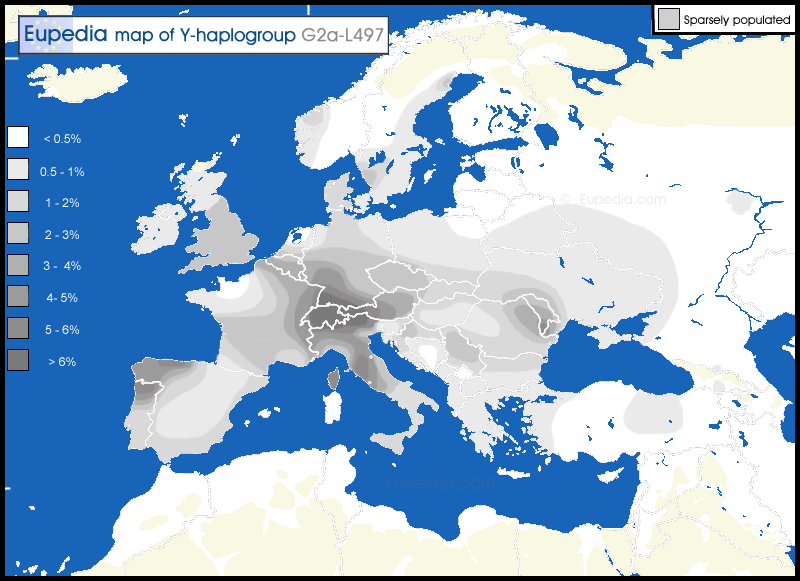This clade was found in the Cucuteni-Trypillian culture (as I had predicted), which explains the hotspot around Moldova. G2a-L497 (or actually its Z1816 subclade) was probably assimilated by the R1b-U152 Proto-Italo-Celts before moving to the Alps. Not only is there a strong geographic correlation with the La Tène culture, L497 also matches the distribution of Italic tribes in Italy. Its high frequency in northwestern Iberia could be due to the accumulated migrations of the Hallstatt Celts and especially the Suebi tribe from Baden-Württenberg.
Data from Spain, France and Central Europe is still patchy, so it will need to be refined.

Data from Spain, France and Central Europe is still patchy, so it will need to be refined.

Last edited:


